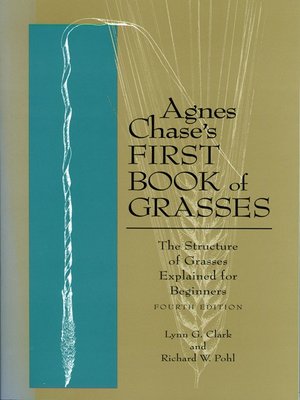Agnes Chase's First Book of Grasses
ebook ∣ The Structure of Grasses Explained for Beginners
By Lynn G. Clark

Sign up to save your library
With an OverDrive account, you can save your favorite libraries for at-a-glance information about availability. Find out more about OverDrive accounts.
Find this title in Libby, the library reading app by OverDrive.



Search for a digital library with this title
Title found at these libraries:
| Library Name | Distance |
|---|---|
| Loading... |
For almost seventy-five years, Agnes Chase's First Book of Grasses has been the classic guide to the structure of this complex group of plants. Clearly written and copiously illustrated with line drawings, the book is accessible to those with little or no botanical training, yet it also is respected by botanists as an authoritative introduction to agrostology.
Last updated in 1959, the book now has been thoroughly revised to reflect current scientific knowledge, nomenclature, and classification. Divided into twelve lessons, the guide first surveys the basic vegetative and reproductive parts of a grass plant, then in succeeding lessons takes up increasingly more complex modifications. Formally recognized groups of grasses are discussed in a taxonomic context, with the principal focus on grass structures, particularly those of inflorescences and spikelets. Virtually all of the species discussed are illustrated with detailed line drawings. With the addition in this edition of a lesson on bamboos, coverage now extends to tropical regions and encompasses all major groups of grasses. The book also includes a short biography of Agnes Chase in the foreword and, for the first time in this edition, a glossary accompanies the appendices on grass classification.
Last updated in 1959, the book now has been thoroughly revised to reflect current scientific knowledge, nomenclature, and classification. Divided into twelve lessons, the guide first surveys the basic vegetative and reproductive parts of a grass plant, then in succeeding lessons takes up increasingly more complex modifications. Formally recognized groups of grasses are discussed in a taxonomic context, with the principal focus on grass structures, particularly those of inflorescences and spikelets. Virtually all of the species discussed are illustrated with detailed line drawings. With the addition in this edition of a lesson on bamboos, coverage now extends to tropical regions and encompasses all major groups of grasses. The book also includes a short biography of Agnes Chase in the foreword and, for the first time in this edition, a glossary accompanies the appendices on grass classification.







